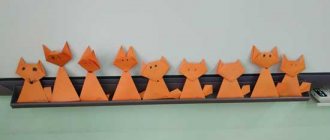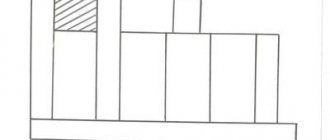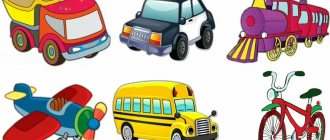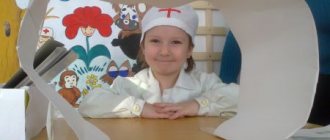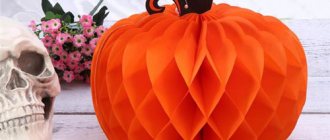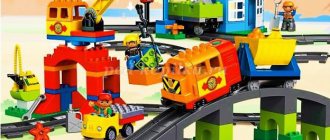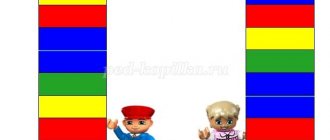Thematic planning for design for the middle group
Knarik Muradyan
Thematic planning for design for the middle group
SEPTEMBER
"Slide with two ladders"
Cultivate an interest in designing from small building materials.
Develop a desire to build buildings.
Strengthen ideas about the details of a building set - cubes, prisms, names of the colors of objects. Practice the ability to perceive an adult’s demonstration in combination with verbal instructions and follow them.
"Tracks"
Cultivate an interest in designing from small building materials.
Strengthen ideas about details: bricks, plates. Learn to build paths by converting them in length, assign the name of the color of the bricks.
Develop fine motor skills and coordination in the movements of both hands.
OCTOBER
"Furniture for a doll"
Learn to build based on the teacher’s model, correctly name the details when analyzing the model. Strengthen ideas about familiar objects.
"Gates"
Strengthen the ability to distinguish and name the parts of a construction set (cubes, bricks, plates)
examine them tactile-motor way.
Learn to build in a certain sequence.
"The gates are low and high"
Cultivate friendly relationships with peers. Ability to play in a team.
Strengthen the ability to distinguish and name the parts of a construction set. Learn to build in a certain sequence, change it, add height.
NOVEMBER
"Car gates"
To instill in children a desire to build gates. Learn to build in a certain sequence, change it, build it in height. Lead to the simplest analysis of structures.
Develop the ability to correlate the sizes of buildings with the sizes of toys.
"House with a Window"
To instill in children a desire to build from large building materials.
Learn to build consistently. Encourage them to reflect their ideas about houses in the construction, to convey their main details.
"Teremok"
Cultivate neatness.
Learn to build in a certain sequence. Develop the ability to distinguish and name the parts of a building set and color.
DECEMBER
"Garage"
Cultivate a desire to build the building yourself. Learn to enclose a space (a house of three walls)
.
Strengthen the ability to distinguish and correctly name the parts of a building material.
"By design"
Strengthen the ability to construct various buildings using previously acquired skills. Learn to arrange buildings in different ways. Develop constructive creativity .
"The Stream and the Boat"
Develop the ability to freely place parts and carefully glue them.
Teach children to make an image of a boat from ready-made shapes (trapezoids and triangles of different sizes)
and draw a stream according to the idea.
Develop a sense of form and composition.
JANUARY
"Bridge"
Give an idea of bridges, their purpose, and main parts. Learn to analyze a sample and follow it, selecting the necessary material.
“Fence for a duck swimming in the lake”
Cultivate interest in buildings.
Learn to close the space along a quadrangle, placing bricks close to each other. Develop knowledge of the colors of objects.
FEBRUARY
"Kindergarten for nesting dolls"
Learn to close the space in a quadrilateral by placing a brick on the long narrow edge of the brick, then on the short one (a beautiful fence, alternate by color.
“By design”
(what we learned)
To cultivate neatness in buildings.
Learn to identify spatial characteristics of objects and relate them to each other. Develop skills in connecting parts together into an aircraft structure .
“By design” (what we learned)
Foster a desire to play with building materials. Learn to make more complex tall buildings by arranging the “builder”
vertically.
Strengthen children's skills in constructing buildings according to a model.
MARCH
"Fence for the kindergarten"
.
Learn to fence a large space ( “lake”
for ducks).
Strengthen the ability to tell how they will build. Encourage the desire to design according to your own plans and ideas.
"Fence at will"
.
Learn to close the space along a quadrangle, alternate parts by color and type. Develop the ability to analyze your construction.
"House for the Cockerel"
Draw children's attention to building materials and their design capabilities . Introduce them to geometric shapes: cube, roof (prism)
APRIL
"House for a Bunny and a Doll"
Introduce children to buildings for different animals. Acquaintance with geometric shapes: large and small cubes, roof (prism)
. Encourage to help the teacher during construction, to take an active part during the play.
«Sand construction»
.
Reinforce knowledge about the properties of sand.
Learn to build a tower, a dog house, paths, benches, tables, etc. Cultivate an interest in sand construction .
"Tower of two blue cubes"
Continue to introduce children to building materials - cube, roof
(prism)
. Encourage children to name the color blue, cube, roof and act on the teacher’s signal.
MAY
"Tower of four green bricks"
Improve children's skills in building a tower of 4 cubes and a roof (prism)
.
Encourage children to name the color yellow, practice naming the building, and explain in detail the construction (brick by brick)
. To consolidate the skill of naming the color green, consider a sample building.
“Table and chair made of yellow cubes and bricks”
Exercise in simultaneous action with two types of parts - cubes and bricks, recognize and name these parts, using the technique of overlaying and applying parts. Answer the teacher's questions in simple phrases.
"Multi-colored path"
Strengthen the skill of basic actions with bricks (building houses and paths)
.
Objectives of teaching design in the middle group of kindergarten
Objectives of teaching design.
Middle group
Educational objectives:
Structural and technical:
Construction material:
- learn how to independently transform buildings in length, width, height
-learn to build buildings in accordance with the size of toys, using parts of different colors
- learn how to build according to the named topic, according to the conditions, according to the plan (plan the sequence, select parts according to shape, size, stability)
- to consolidate technical construction skills (the ability to place bricks on edge, at corners, closing the space)
Paper:
-teach paper construction: bend a rectangular sheet of paper in half, aligning the sides and corners, iron the fold
-glue parts to the main form (windows, doors, wheels)
Natural and waste material:
-involve children in making crafts from natural and waste materials
-create constructive images by transforming various workpieces
-use glue, plasticine, tape, matches to hold parts together
Developmental tasks:
Construction material:
-reinforce familiar names of parts (cube, brick, plate, prism) + introduce new ones
— learn to use them taking into account the basic design properties (size, stability, shape)
- learn to analyze a building sample: identify the main parts and distinguish them by size and shape, establish the spatial arrangement of these parts relative to each other (in houses: walls, ceiling at the top; in a car: engine, cabin, body)
— continue to develop a sense of form when creating buildings and crafts;
- continue to develop visual-effective and visual-figurative thinking, imagination, attention, memory;
Paper:
-learn to identify and name a sheet of blank paper by shape (square, circle, rectangle), size, color
-develop creativity and artistic taste in the design of paper crafts
Natural and waste material:
-introduce children to a variety of natural and waste materials and their properties
-develop independence, the ability to find a way to make a toy
- expand the child’s vocabulary with special concepts: “proportion”, “scale”, “texture”, “plasticity”, “proportion”.
Educational tasks:
— continue to cultivate interest in design and constructive creativity;
— cultivate the ability to follow the teacher’s verbal instructions during the exercises;
- aesthetic attitude towards works of architecture, design, products of one’s own constructive activities and the crafts of others;
- accuracy when working with various materials and tools
- ability to work in an organized manner, together with children and the teacher in the process of creating common work
